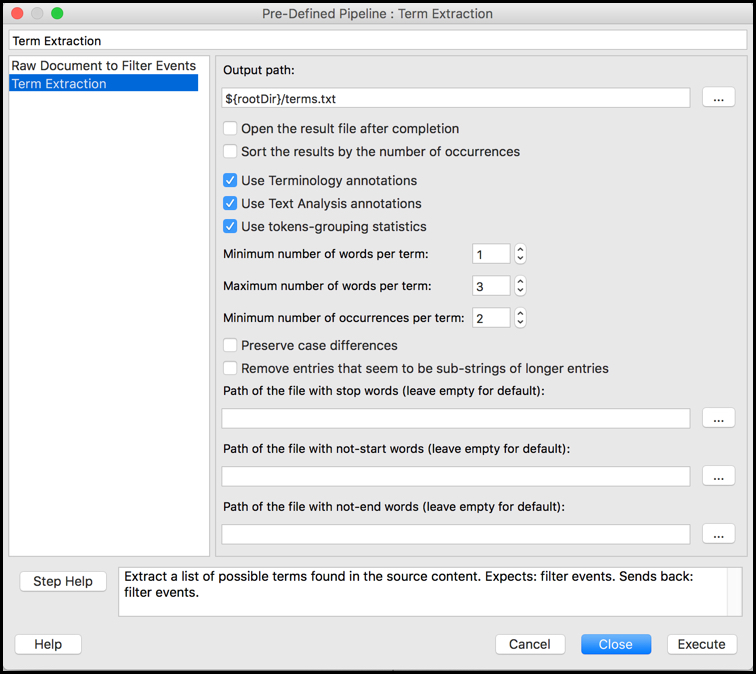One of the most critical steps in starting a relationship with a translation vendor is to create an effective translation glossary. Most issues that come up with negative translation feedback are related to poor choices in terminology. This problem is especially true when the subject matter is highly technical.
To reduce translation errors and also increase the acceptance of a translation by your customers and colleagues, it is essential to follow these three steps.
Gather terms for your glossary
The key to setting up a substantial glossary is selecting the right terms. A great place to start is to analyze the broadest possible set of content.
We like to use the Rainbow module of the Okapi Framework. The Okapi Framework is a cross-platform and free open-source set of components and applications that offer various utility applications for localizing and translating documentation and software. The Rainbow module is a set of utilities related to parsing and processing text from a whole host of file types.
Rainbow has a tool for extracting terms from a set of content based on the number of occurrences. You also have a set of options you can define to help limit the list to the most relevant terms (see below).
Once you acquire the term list, you can sort through and look for the terms that would be most helpful in a glossary. Try to focus on terminology that could have multiple meanings, be technical in nature, or have various meanings.
Create proper translation (with context)
Compile the list into a single column of text and start a translation project in a Translation management system where you can leverage past work if applicable. If you do not have any translation memory from previous assignments, a simple translation in a table format will be fine.
Be sure to ask questions about any of the terms in the list. If, during the research process, you find any supporting images, links to articles, or other valuable information, please include that content in additional columns in the table. Depending on the Translation Management System (TMS) used, that information can be committed to the glossary. This type of information will be useful during translation and will also help in the future if you should add additional languages to the glossary.
It is always a best practice to ask translators to search the reference material for specific terms so that they can fully understand the context of the terminology. If interesting or helpful contextual information is discovered, insert those examples into the notes column of the table. This method is also useful for defining the alternate usage of key terminology. A good example is the term Print. Some firms will use Print as a noun and a verb (see example). If that is the case, the translator should provide both forms of translation.
Noun – To obtain a print of the specification, please see the reports section of the software.
Verb – A user can print the specifications from the File menu on the main screen.
Have the glossary reviewed by a subject matter expert (SME)
Getting approval or buy-in from your subject matter experts is key to the success of a glossary project. The client review process can be complicated. If you take the step of approving key terminology ahead of the translation step, you can often reduce issues during the client review phase. This will save you time and money during the translation process.
If you do not have a subject matter expert, please discuss the situation with your project manager. Most language service providers can provide a subject matter expert to review the translation.
Once the terminology list is final, the language service provider can import the content into a termbase in the TMS. That will allow for automatic prompts to remind the translator to use approved terminology as it comes up in the translation assignment (see below).
Some TMS can alert the user of terminology mismatches in a QA report at the end of the project. The system we use has this ability. It is incredibly helpful.
Creating a glossary represents a fair amount of upfront work, but the rewards are measurable. Correctly creating a glossary will increase the likelihood of success when you engage with a translation vendor. Starting a project with an approved terminology list will reduce translation costs, reduce the time to completion, and increase consistency.







Comments